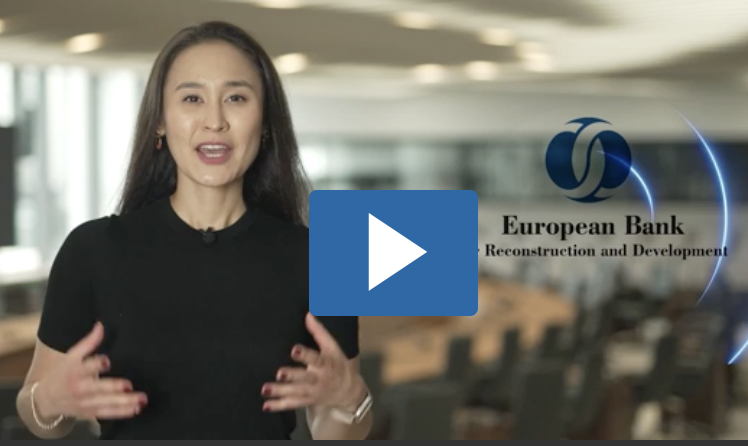- Financial Sector Strategy 2021-2025 offers three-pronged response to challenges in the sector
- Focus is on green investment, inclusive financial systems and “future-proofing” the sector
- EBRD countries continue to experience significant headwinds exacerbated by Covid-19 crisis
The EBRD’s new Financial Sector Strategy for 2021-2025, which was approved today by the Board of Directors, aims to support the financial sectors across EBRD regions, many of which are experiencing significant headwinds exacerbated by the Covid-19 crisis. It envisages scaling up green financing, boosting inclusive and gender smart economic development, and strengthening the sectors’ readiness to respond to challenges by “future-proofing” them.
Challenges for financial institutions abound: limiting climate change requires large-scale redirection of capital and a transformation of operating models. The economic recovery from Covid-19 is expected to be long and uneven, reducing banks’ ability to support their clients. This leads to increased gaps in access to finance, particularly for female and young entrepreneurs and micro-, small- and medium-sized businesses. The trade finance gap remains wide across most of the EBRD regions.
The three-pronged EBRD Financial Sector strategy addresses these problems systematically, building upon solid long-standing relationships with our partner financial institutions across the 38 economies on three continents where we work. It builds on an exceptionally strong franchise: during the 2016-2020 strategy period, the EBRD signed more than 730 operations and invested more than €17 billion in the financial sector.
Greening finance, the first strategic priority, is of central importance for the EBRD, a leader in climate finance, which has pledged that by 2023 it will align all its activities with the goals of the Paris Agreement, and make more than half its investments green by 2025. This is especially important across the Bank’s countries of operation (which on average are significantly more carbon-intensive than the EU average).
In the financial sector, this means boosting impact at the level of the clients of partner financial institutions by increasing the amounts of financing of sustainability investments and diversifying the EBRD’s evolving range of products to enhance green financing.
This also means aiming for systemic impact on financial sectors. The strategy sets out how the EBRD will support its partner financial institutions to align their financial flows with the Paris Agreement by integrating climate considerations into their risk management and governance – all guided by leading market and regulatory practice.
The EBRD has already developed a Paris alignment methodology for the direct financing of projects; its proposed indirect financing methodology, detailing how it will determine alignment of its investments with partner financial institutions, is now out for public consultation and is expected to be piloted in 2022 and rolled out from 1 January 2023.
The strategy development was guided by a 2021 survey which showed financial institutions across EBRD regions were not yet fully prepared for the impact of climate change on their operations.
The strategy’s second policy aim - boosting inclusive economic development to drive equality of opportunity through the financial sector - will focus on expanding access to finance to SMEs and micro-enterprises, women, youth, companies located in underserved regions, and others. Tackling widening inequality and access to finance gaps across the EBRD region is another key strategic priority of the Bank. With growing access to finance gaps in most regions, and up to 50 percent of income inequality across the Bank’s countries of operation caused by factors such as gender, place of birth or parental background – rather than merit or effort – the consequences are increasingly polarised societies and associated political repercussions. The strategy also aims at supporting financial institutions to become more diverse and gender equal institutions. Finally, the Bank will work closely with Central Banks, regulators and policy makers to create a conducive environment that enables entrepreneurs from all parts of society to grow their businesses, innovate and prosper.
Thirdly, the EBRD aims to “future-proof” the financial sector: strengthen its readiness to respond to challenge, both by continuing to provide capital, support privatisations and encourage capital market development, and also by adding a strong digitalisation push, both with existing clients and with new fintech market participants.
Working with donors will continue to play a key role in building capacity and developing skills of PFIs, changing behaviour and creating well-functioning markets. This in turn provides strong leverage on every donor € spent and formidable outreach within the entire economy.
The EBRD also works closely on financial institutions with other international financial organisations and partners. In the next five years, it will enhance co-financing and coordination on policy dialogue, as well as build on its strategic partnership with the European Union, leveraging new instruments under the European Fund for Sustainable Development plus (EFSD+), Instrument for Pre-Accession (IPA), Recovery and Resilience Facility (RRF), and Team Europe Initiatives active contribution.



